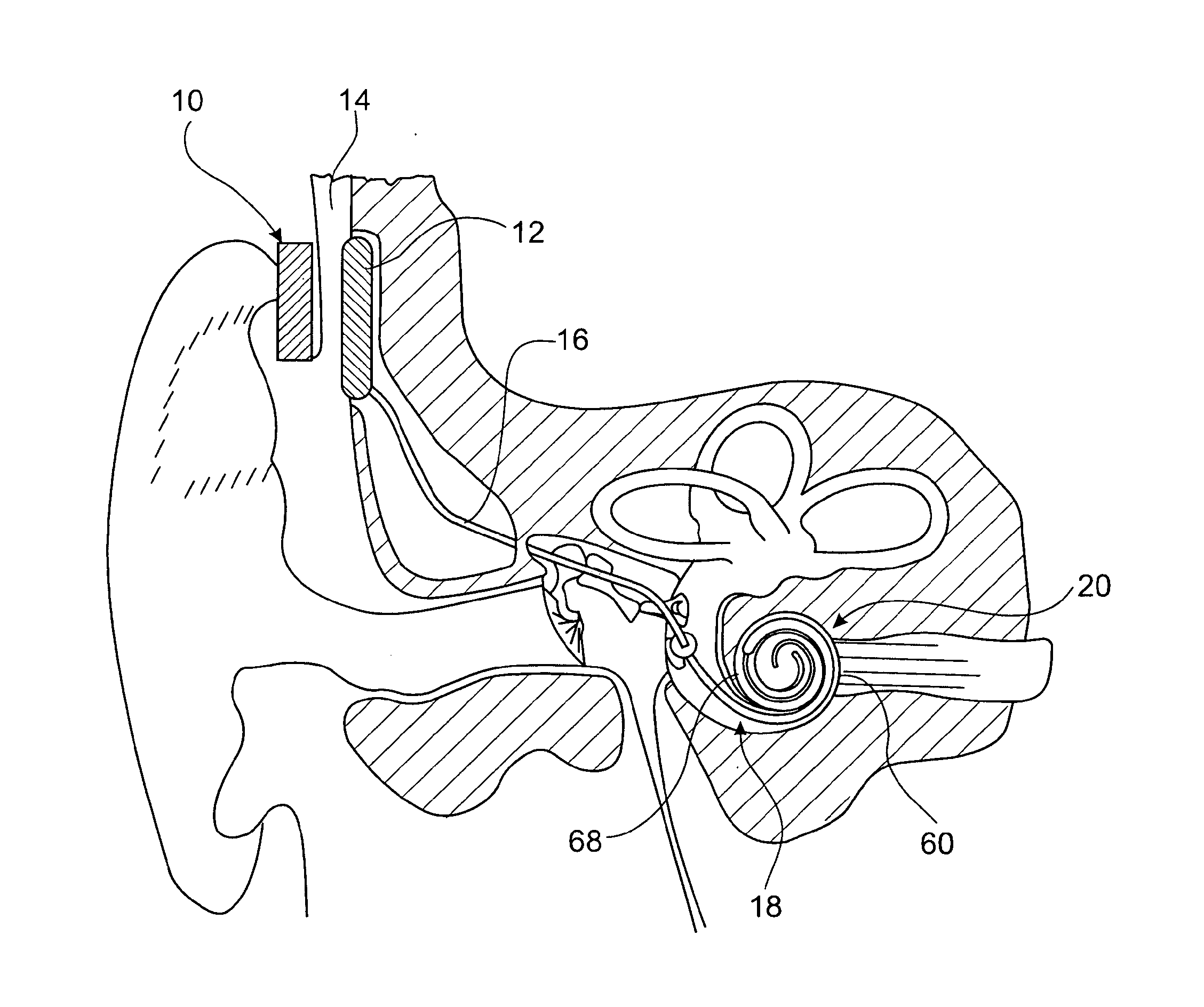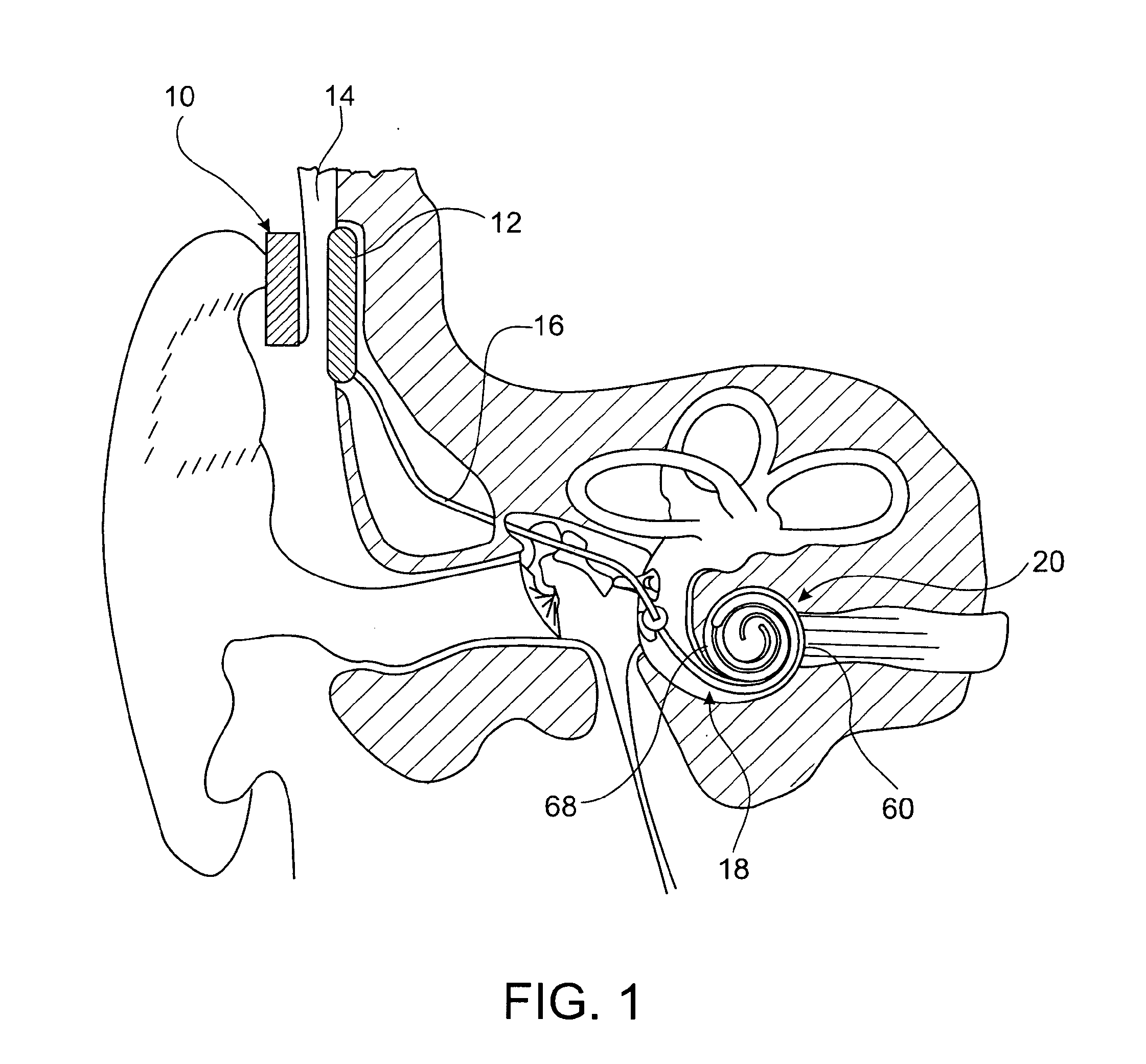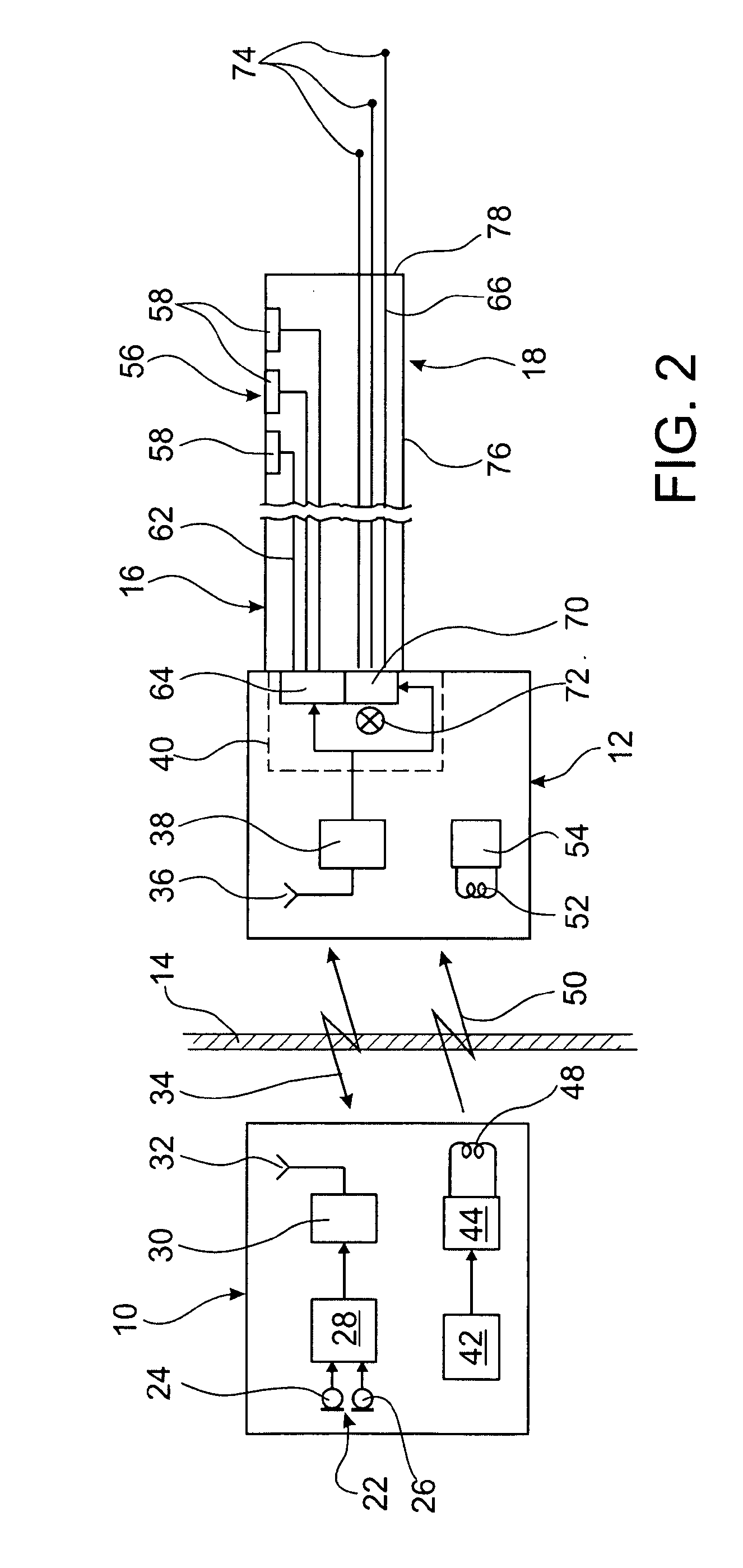Cochlear implant hearing instrument
a hearing instrument and cochlear implant technology, applied in the field of hearing instruments, can solve problems such as damage to remnant neurons in the apical turns, and achieve the effect of reducing the outer diameter
- Summary
- Abstract
- Description
- Claims
- Application Information
AI Technical Summary
Benefits of technology
Problems solved by technology
Method used
Image
Examples
Embodiment Construction
[0021]FIG. 1 shows a cross-sectional view of the mastoid region, the middle ear and the inner ear of a patient after implantation of an example of a hearing instrument according to the invention, wherein the hearing instrument is shown only schematically. The system comprises an external unit 10 which is worn outside the patient's body at the patient's head, typically at a location close to the user's ear, and an implantable unit 12 which is implanted under the patient's skin 14, usually in an artificial cavity created in the user's mastoid. The implantable unit 12 is connected, via a cable assembly 16, to a stimulation assembly 18 implanted within the cochlea 20. The external unit 10 is fixed at the patient's skin in a position opposite to the implantable unit 12, for example, by magnetic forces created between at least one fixation magnet provided in the external unit 10 and at least one cooperating fixation magnet provided in the implantable unit 12 (such magnets are not shown in...
PUM
 Login to View More
Login to View More Abstract
Description
Claims
Application Information
 Login to View More
Login to View More - R&D
- Intellectual Property
- Life Sciences
- Materials
- Tech Scout
- Unparalleled Data Quality
- Higher Quality Content
- 60% Fewer Hallucinations
Browse by: Latest US Patents, China's latest patents, Technical Efficacy Thesaurus, Application Domain, Technology Topic, Popular Technical Reports.
© 2025 PatSnap. All rights reserved.Legal|Privacy policy|Modern Slavery Act Transparency Statement|Sitemap|About US| Contact US: help@patsnap.com



